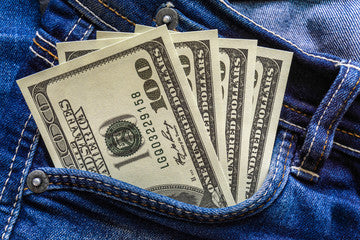Excerpt from Consultant's Report on Benefits of Spin Bullets
The following is an excerpt from a consultant's report outlining some, but not all, of the possible benefits of Spin Bullets:
"The sleeve or rifling engaging section of the projectile is made tight enough to engage the main projectile section during engraving by the barrel's rifling, yet enough tolerance is left to allow minor "slippage", easing the bullet's transition into the full rotational speed. This becomes significant when the advantage of Shot Start Pressure and Engraving Pressure are taken into consideration. This minor slip allows the bullet a greater time to completely spin up to final speed, easing its transition, and allowing greater speeds to be obtained. The tolerances between the jacket section and the main bullet section also eases the engraving of the rifling into the projectile, giving the copper a place to be displaced. What this all means is that the combination of reduced engraving pressure and easier spin-up via reduced requirement of rotational torque, can reduce the pressure the cartridge yields for a given load. When the load is adjusted to bring the pressure back to specification, an increase in velocity and performance can be gained.
To culminate this concept, this design allows for lower loading pressure at peak chamber pressure, and/or a gain in velocity. This design can also reduce copper fouling and cleaning requirements of the rifle. As an additional benefit, this design can allow for small anomalies in the bore, as seen in older rifles, and ease the overall outward stress on double rifles. It can also help align the projectile with the bore by centering the projectile in the bore, while allowing the sleeve that is secured in the neck of the cartridge to align with the cartridge; so, in the event of a small misalignment between chamber and bore, this bullet design can allow consistent shot placement by compensating for a small difference.
The small space between the sleeve and the shank of the main projectile mass gives the copper being displaced when the rifling begins engraving a place to go. This makes the pressure to do so less, and allows the sleeve to conform to the bore. This more malleable sleeve design eases the strain on the rifling in the throat and transitional area, reducing pressure to do so, called Engraving Pressure. This will reduce Shot Start Pressure. This also allows the bullet initially more time to accelerate in its rotation. This reduces spin up torque, and the stagnation in the throat of the rifling during peak chamber pressures. This can reduce the peak pressure experienced. It allows the projectile to be further down the bore and move at a faster speed when this pressure peaks. The maximum chamber pressure will therefore be less, and if the load is adjusted back up to that pressure, an increase in muzzle velocity will be experienced. The concept works in a way that allows the sleeve to compress down the shaft of the main projectile and unify/bond them together through friction, both diametrically and at the mating surfaces of the front face of the sleeve and rear of the main body/nose section."

PUT MONEY IN YOUR POCKET!
NO Order Minimums
Generous Profit Margins
Dedicated, FAST Customer Service



